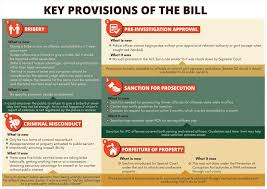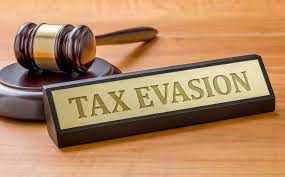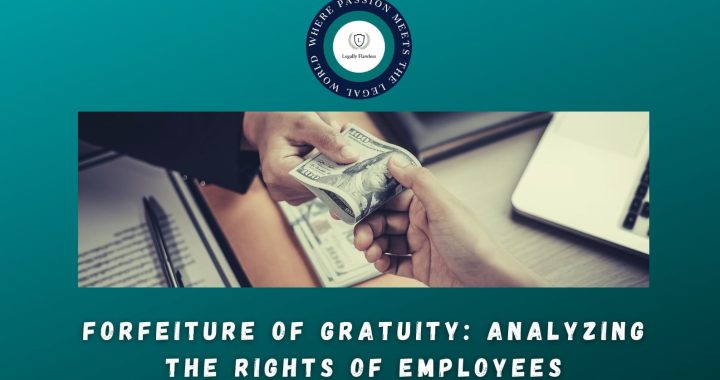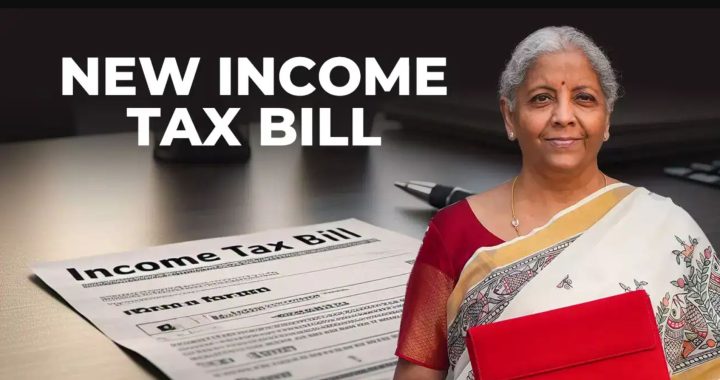What is Income Tax Liability on Income from trading in Future and Options

How-to-Report-Income-from-Future-and-Options
Income from Futures and Options (F&O) and regular share trading income differ in terms of instrument traded, purpose, and taxation.
Before coming to How the Income from Future and Options would be taxed, here are some salient differences between Trading and Future and Options and normal trading in equity or commodities.
In Regular share trading: One buys and sells stocks directly, aiming for short-term or long-term capital appreciation or dividends.
In Future and Options: one trades contracts that derive their value from underlying assets like stocks, currency, or commodities.
While Regular share trading is primarily for long-term wealth creation through ownership and potential dividends, Future and Options can be used for various purposes, such as Speculation Profit from short-term price movements, Hedging to Mitigate risk on existing holdings and more commonly Leveraging, where one can have quick gains (and losses) with smaller capital.
Both the Incomes i.e. Short Term/ Long Term Capital gains and Income from trading in future and Options are subject to Income Tax at different rates as follows:
- Short term Capital gains are taxed at 15% rate of Income Tax
- Long terms capital Gains are taxed at 10% rate of Income Tax
- Future and Options Income is Considered non-speculative business income, taxed under the “Profits and Gains from Business and Profession” head at regular income tax slab rates.
While both offer income potential, their underlying mechanisms and tax treatments are distinct.
Which ITR form is to be used for reporting Future and Options Income?
Profits from F&O trading are considered business income, irrespective of your regular profession or the frequency of trades. You need to report this income in your ITR using ITR-3
Tax Rate: Profits are taxed as per your regular income tax slab rates.
Deductions: You can claim expenses incurred for F&O trading like brokerage charges, transaction fees, and office expenses to reduce your taxable income.
Taxation of Loss in case of F&O Contracts:
Note that F&O losses can only be offset against profits from the same business or profession in the same assessment year. These losses cannot be set off against other sources of income such as salary or rental income.
Turnover and Audit Requirements in case income from Future and Options:
Mandatory Tax Audit for Future and Options if turnover exceeds Rs 10 Crore a year:
A tax audit is mandatory if your Future &Options turnover exceeds Rs. 10 crore in a year, regardless of profit or loss.
Can Income from Future and Options be taxed under Presumptive taxation scheme?
Many Chartered Accountants are of the view that if F&O turnover is less than Rs. 2 crore, you can opt for a presumptive taxation scheme where your taxable income is considered 6% of your total turnover. However, an audit is mandatory if you declare an income lower than the presumptive income and your total taxable income exceeds Rs. 2.5 lakh (i.e. more than maximum income not subject to income tax.
However, in my view, the same cannot be reported under presumptive taxation as the income from future and options is in nature of speculative income and presumptive income scheme does not apply to speculative income.
Advance Tax Liability on Future and Options Income:
If your total tax liability exceeds Rs. 10,000 in a year, you need to pay advance tax in installments throughout the year. This onus to pay Advance Tax is not dependent on nature of income, thus, even if income is in nature of speculative income, it is subject to payment of Advance Tax.
When it comes to F&O trading in India, you can claim various expenses against your taxable income, significantly reducing your tax liability. Here are some common ones:
Direct Trading Expenses:
- Brokerage charges: The commission your broker charges for executing your F&O trades is fully deductible.
- Transaction fees: Any fees levied by the exchange or clearing corporation for your F&O transactions are claimable.
- STT (Securities Transaction Tax): Though non-deductible at the point of incurring, you can claim credit for the STT paid on F&O contracts when filing your ITR.
- Market data subscriptions: The cost of real-time market data feeds essential for your trading analysis is claimable.
- Software and tools: Subscriptions or license fees for trading software and analytical tools used for F&O trading are deductible.
Indirect Trading Expenses Incurred on earning income from Future and Options Income:
- Office expenses: Rent, electricity, internet, telephone charges related to your dedicated F&O trading space are claimable.
- Office supplies: Stationery, computer peripherals, and other essential office supplies can be included.
- Travel and conveyance: Expenses incurred for travel directly related to F&O trading (excluding personal commutes) are deductible.
- Professional fees: Fees paid to financial advisors, research analysts, or tax consultants for F&O-related advice are claimable.
- Depreciation on assets: Computers, laptops, and other equipment used solely for F&O trading can be depreciated over their useful life.
- Interest on capital loans: Borrowing money specifically for F&O trading activities allows claiming the interest paid as a deduction.
Important Points not to be missed while reporting Income from Future and Options:
Reporting F&O income in your Indian income tax return requires due diligence and some important precautions to avoid issues or discrepancies. Here are some key points to remember:
Maintain proper documentation: All claimed expenses must be supported by valid bills, records of all your F&O trades, including contract notes, brokerage statements, bank statements, and profit/loss calculations. receipts, or invoices.
Apportionment of Expenses may be required: If an expense relates to both personal and F&O trading, only the portion used for business is claimable.
Limit on cash payments: Expenses exceeding Rs. 10,000 paid in cash generally cannot be claimed.
Choosing the right ITR form for reporting Income from Future and Options:
ITR-3: Even if you have very few F&O trades, report it as business income and choose ITR-3. This applies even if you have a regular salary.
Turnover reporting: Report the total turnover (sum of buy and sell transactions) of your F&O trades in the specified schedule of ITR-3.
Additional precautions for filing Income Tax Return: Avoid late filing fees and penalties by filing your ITR before the due date.
How to calculate Turnover and Purchases in Future and Options trades- income tax return
Calculating turnover and purchases for F&O trades in your Indian income tax return involves specific considerations. Here’s a breakdown:
Calculating Turnover from Future and Options:
In F&O trading, turnover refers to the total absolute value of your buy and sell transactions, regardless of profit or loss. It’s essentially the sum of the “consideration amounts” involved in all your trades.
Calculation:
Futures: The turnover for futures is simply the difference between the purchase price and the selling price, multiplied by the contract size. Consider both profitable and unprofitable trades.
Options: For options, turnover includes:
Profit from selling options: This is the difference between the selling price and the premium received.
Absolute profit/loss from exercising options: This is the difference between the exercise price and the underlying asset price at the time of exercise, considering both profits and losses.
Premium received from buying options: Include the premium even if you didn’t exercise the option.
Multiple trades: If you make multiple trades on the same contract (hedging or squaring off positions), calculate the turnover based on the final difference between the first buy and the last sell transaction.
Purchases:
Purchases in F&O refer to the total amount you spent on acquiring futures or options contracts.
How to Calculate Purchase Value of Options:
Futures: Multiply the purchase price by the contract size for all bought contracts.
Options: Add the premium paid while buying options contracts, regardless of their expiry or exercise.
Reporting:
What are usual mistakes committed by Tax Payer while reporting Future and Options Income in Income Tax Return
Here are some common mistakes taxpayers make when reporting F&O income in their Indian income tax return:
Misreporting income/turnover:
Not reporting F&O income at all: This is the most serious mistake, leading to potential penalties and scrutiny. Remember, all income sources, including F&O, must be declared. Taxpayers may note that all the data regarding their transactions on stock exchanges is available online at Income Tax Portal, hence, take full precautions to reconcile the data before filing the return of Income Tax.
Reporting incorrectly:
Mistakes in calculations, especially when dealing with multiple trades or complex strategies, can lead to inaccurate turnover or profit figures.
Choosing the wrong ITR form:
Using ITR-2 instead of ITR-3: While ITR-2 seems simpler, it’s not suitable for regular F&O traders. Choose ITR-3 for accurate reporting of business income. Another Mistake usually committed is to report the F&O income under Head Income from Capital Gains.
Misclassifying income: Reporting F&O income as capital gains (taxed differently) can lead to discrepancies.
Missing statutory filing deadlines: Late filing attracts penalties and delays processing your return.


 ITAT Amritsar: No Section 269SS Violation for One-Time Cash Payment Before Sub-Registrar
ITAT Amritsar: No Section 269SS Violation for One-Time Cash Payment Before Sub-Registrar  Tax Officials Unleash Digital Dragnet: How New Raid Powers Redefine Privacy, Property Rights in India and likely to Fuel Corruption
Tax Officials Unleash Digital Dragnet: How New Raid Powers Redefine Privacy, Property Rights in India and likely to Fuel Corruption  Income Tax Department Rewards for Reporting Tax Evasion: A Comprehensive Guide
Income Tax Department Rewards for Reporting Tax Evasion: A Comprehensive Guide  Forfeiture of Gratuity by Employer- What are the Remedies for an employee- Can employer be challenged?
Forfeiture of Gratuity by Employer- What are the Remedies for an employee- Can employer be challenged?  Employer can forfeit gratuity of an employee in case of moral turpitude
Employer can forfeit gratuity of an employee in case of moral turpitude  Diving Deeper: The Impact of the New Tax Bill on Dairy and Farming Income
Diving Deeper: The Impact of the New Tax Bill on Dairy and Farming Income